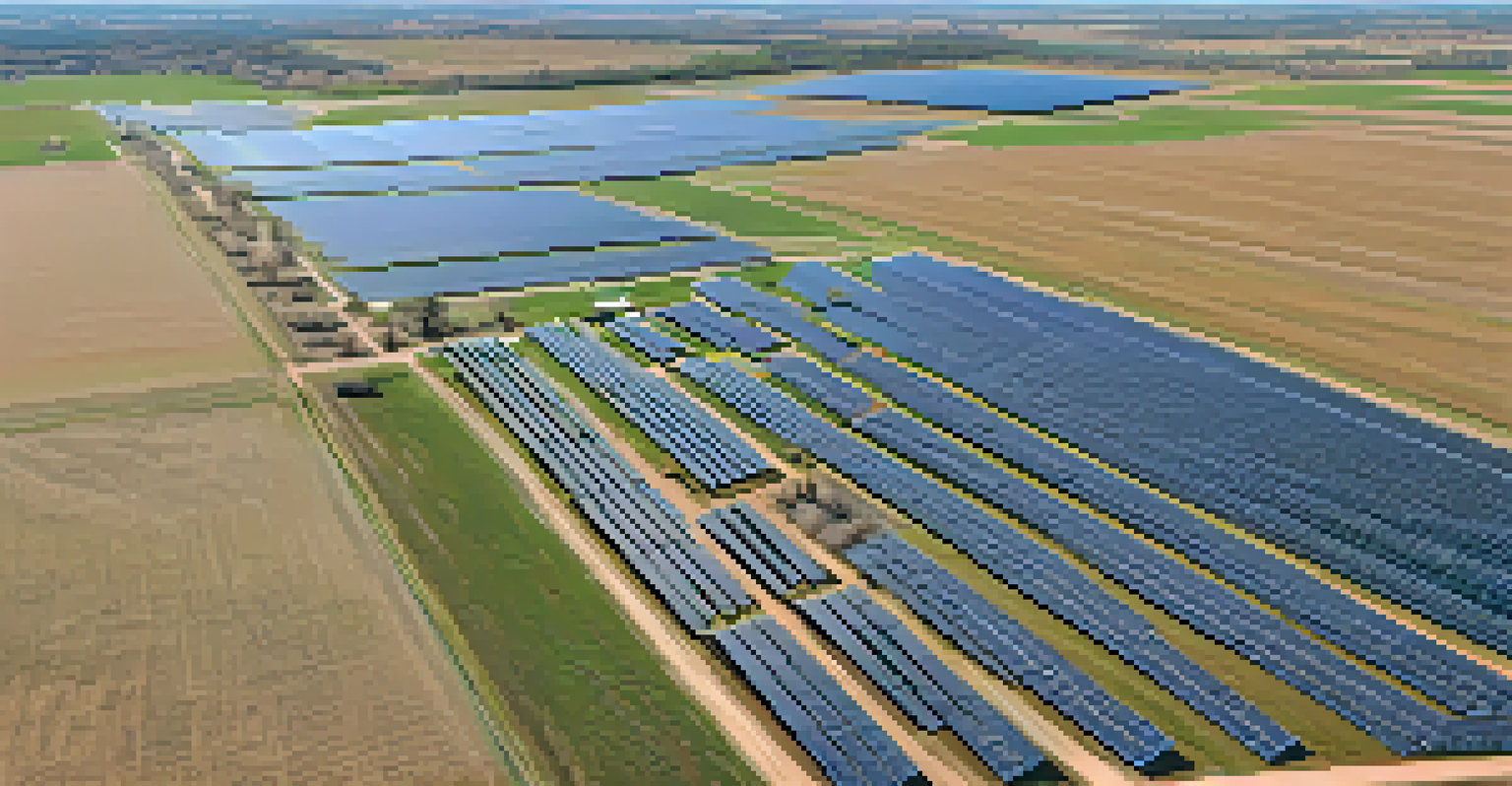Texas Economy: The Role of Renewable Energy Sector

The Surge of Renewable Energy in Texas
Texas has become a leader in renewable energy production, particularly in wind and solar power. With its vast open spaces and a commitment to innovation, the state has harnessed natural resources to create a robust energy sector. This growth has not only supplied electricity to millions but has also attracted significant investments.
The transition to renewable energy is not just a moral imperative but an economic opportunity that can revitalize our communities and protect our planet.
In recent years, Texas has consistently ranked first in the nation for wind energy capacity, generating more than any other state. The development of solar energy has also seen remarkable growth, with solar farms sprouting up across the landscape. This shift towards renewables signifies a turning point in Texas’ energy landscape, moving away from traditional fossil fuels.
As the renewable energy sector expands, it brings with it a plethora of job opportunities, from engineering to project management. This sector's growth is a testament to Texas' ability to adapt and innovate, positioning itself as a model for other states aiming to transition to cleaner energy sources.
Economic Benefits of Renewable Energy Investments
Investing in renewable energy has proven to be a boon for the Texas economy. The influx of capital from national and international investors has spurred economic development and infrastructure improvements. This financial support not only enhances energy production capabilities but also boosts local economies.

Job creation is one of the most significant economic impacts of this investment. The renewable energy sector has generated thousands of jobs, ranging from manufacturing to installation and maintenance. These jobs often pay competitive wages, contributing to the overall economic well-being of communities throughout Texas.
Texas Leads in Renewable Energy Growth
Texas has become a frontrunner in renewable energy production, particularly in wind and solar power, showcasing its commitment to innovation and sustainability.
Moreover, the increased demand for clean energy has stimulated growth in related industries, such as energy storage and electric vehicle manufacturing. This ripple effect creates a more resilient economy, reducing reliance on oil and gas while embracing sustainable practices.
Environmental Impact and Sustainability Goals
The growth of the renewable energy sector in Texas is not just about economic gains; it also plays a crucial role in environmental sustainability. By shifting towards wind and solar energy, Texas is taking significant steps to reduce greenhouse gas emissions. This transition is essential for combating climate change and protecting natural resources.
Investing in renewable energy is not just about reducing carbon emissions; it’s about creating jobs, stimulating the economy, and ensuring a sustainable future for generations to come.
Renewable energy sources produce little to no air pollution, making them far more environmentally friendly than fossil fuels. As more Texans embrace clean energy, the state is contributing to a cleaner environment, which benefits both current and future generations. This commitment to sustainability aligns with broader national and global goals.
Additionally, the renewable sector promotes the use of local resources, reducing dependence on imported fuels. This local approach not only strengthens the economy but also fosters a sense of community and stewardship toward the environment.
Challenges Facing the Renewable Energy Sector
Despite its successes, the renewable energy sector in Texas faces several challenges. One of the most pressing issues is the need for improved energy storage solutions. As renewable sources like wind and solar are intermittent, finding ways to store energy for use during peak demand is critical.
Moreover, regulatory hurdles and policy changes can impact growth in the sector. Ensuring that supportive policies remain in place is essential for continued investment and development. Stakeholders must work together to navigate these challenges and create a sustainable framework for the future.
Economic Boost from Renewable Investments
Investing in renewable energy has significantly bolstered the Texas economy by creating thousands of jobs and stimulating growth in related industries.
Finally, public perception and acceptance of renewable energy can vary. Educating communities about the benefits of clean energy is crucial for fostering support and addressing any concerns. Overcoming these challenges will require collaboration among government, industry, and the public.
The Future of Renewable Energy in Texas
Looking ahead, the future of renewable energy in Texas appears promising. With ongoing technological advancements, the efficiency of renewable energy systems continues to improve. This progress will likely lead to even greater adoption of clean energy solutions across the state.
Moreover, as the global demand for renewable energy increases, Texas stands to benefit significantly. The state is well-positioned to export its expertise and resources, contributing to a more sustainable energy landscape on a national and international scale. This opens doors for further economic growth and job creation.
As Texas commits to ambitious renewable energy targets, the state’s economy will likely transform. By prioritizing clean energy, Texas can lead the way in demonstrating that economic growth and environmental responsibility can coexist harmoniously.
Local Communities and Renewable Energy Initiatives
Local communities are playing a vital role in the renewable energy revolution in Texas. Many towns and cities are implementing their own initiatives to harness wind and solar power, leading to increased energy independence. These grassroots efforts often inspire residents and local businesses to participate in the transition to clean energy.
Community engagement is essential for the success of renewable projects. When local stakeholders are involved in the planning process, they are more likely to support and invest in these initiatives. This collaborative approach ensures that projects meet the needs of the community while promoting sustainable practices.
Community Engagement Drives Success
Local communities in Texas are actively participating in renewable energy initiatives, enhancing energy independence and fostering economic resilience.
Additionally, local renewable energy projects can provide financial benefits, such as reduced energy costs and job creation. As communities embrace clean energy, they not only contribute to a healthier environment but also enhance their economic resilience.
Conclusion: A Bright Future for Texas’ Renewable Energy Economy
In conclusion, the renewable energy sector is transforming the Texas economy in profound ways. From job creation to environmental sustainability, the benefits are far-reaching. As Texas continues to invest in and prioritize renewable energy, it sets an example for other states to follow.
The challenges ahead are significant, but with collaboration and innovation, Texas can overcome them. A commitment to renewable energy not only strengthens the economy but also ensures a healthier planet for future generations. The state’s abundant natural resources and entrepreneurial spirit will drive this transformation.

As we look to the future, it's clear that the renewable energy sector will play a crucial role in shaping Texas’ economic landscape. With ongoing efforts and community support, the Lone Star State is on track to lead the nation in sustainable energy production.